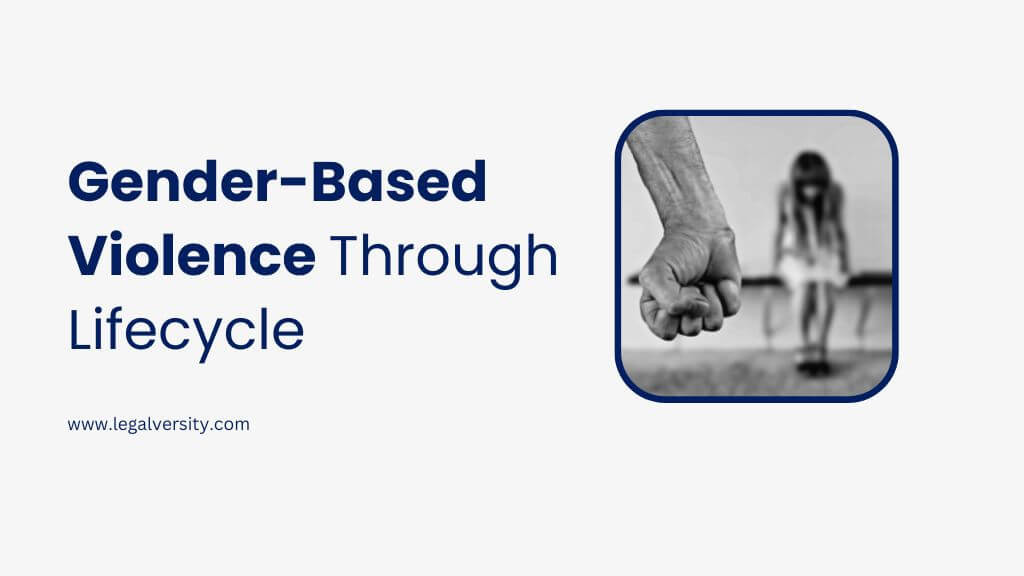Violence against girls and women occurs at different points in their lifecycles. Many women experience multiple episodes of violence that may start in the prenatal period and continue through childhood to adulthood and old age.
The table describes the violence that may be experienced at different points in a girl’s/woman’s lifecycle. The lifecycle approach to gender-based violence helps one understand the cumulative impact of violence experienced by girls and women, especially in terms of its physical and mental health consequences.
Scope of the Problem
Population-level surveys based on reports from victims provide the most accurate estimates of the prevalence of intimate partner violence and sexual violence in non-conflict settings.
The first report of the “WHO Multi-country study on women’s health and domestic violence against women” in 10 mainly low and middle-income countries found that among women aged 15-49:
- Between 15% of women in Japan and 71% of women in Ethiopia reported physical and/or sexual violence by an intimate partner in their lifetime;
- Between 0.3-11.5% of women reported experiencing sexual violence by someone other than a partner since the age of 15 years;
- The first sexual experience for many women was reported as forced- 17% of women in rural Tanzania, 24% in rural Peru, and 30% in rural Bangladesh reported that their first sexual experience was forced.
Risk Factors in Gender-Based Violence
Factors found to be associated with intimate partner and sexual violence occur within individuals, families and communities, and wider society. Some factors are associated with being a perpetrator of violence some are associated with experiencing violence and some are associated with both.
Risk factors for both intimate partner and sexual violence include:
- Lower levels of education (perpetration of sexual violence and experience of sexual violence):
- Exposure to child maltreatment (perpetration and experience);
- Witnessing family violence (perpetration and experience);
- Antisocial personality disorder (perpetration);
- Harmful use of alcohol (perpetration and experience);
- Having multiple partners or being suspected by their partners of infidelity and
- Attitudes that are accepting of violence and gender inequality.
Factors specifically associated with intimate partner violence include:
- Past history of violence;
- Marital discord and dissatisfaction;
- Difficulties in communicating between partners.
Factors specifically associated with sexual violence perpetration include:
- Beliefs in family honor and sexual purity:
- Ideologies of male sexual entitlement; and
- Weak legal sanctions for sexual violence.
The unequal position of women relative to men and the normative use of violence to resolve conflict are strongly associated with both intimate partner violence and non-partner sexual violence.
Health Consequences of Gender-Based Violence
Intimate partner and sexual violence have serious short- and long-term physical, mental, sexual, and reproductive health problems for survivors and for their children, and lead to high social and economic costs.
- Violence against women can have fatal results like homicide or suicide.
- It can lead to injuries, with 42% of women who experience intimate partners reporting an injury as a consequence of this violence.
- Intimate partner violence and sexual violence can lead to unintended pregnancies, induced abortions, gynecological problems, and sexually transmitted infections, including HIV.
- Intimate partner violence in pregnancy also increases the likelihood of miscarriage, stillbirth, pre-term delivery, and low birth weight babies.
- These forms of violence can lead to depression, post-traumatic stress disorder, sleep difficulties, eating disorders, emotional distress, and suicide attempts.
- Health effects can also include headaches, back pain, abdominal pain, fibromyalgia, gastrointestinal disorders, limited mobility, and poor overall health.
- Sexual violence, particularly during childhood, can lead to increased smoking, drug and alcohol misuse, and risky sexual behaviors in later life.
Impact on Children
- Children who grow up in families where there is violence may suffer a range of behavioral and emotional disturbances.
- Intimate partner violence has also been associated with higher rates of infant and child mortality and morbidity.
Social and Economic Costs
The social and economic costs of intimate partner and sexual violence are enormous and have ripple effects throughout society. Women may suffer isolation, inability to work, loss of wages, lack of participation in regular activities, and limited ability to care for themselves and their children.
Relevant to this Post

